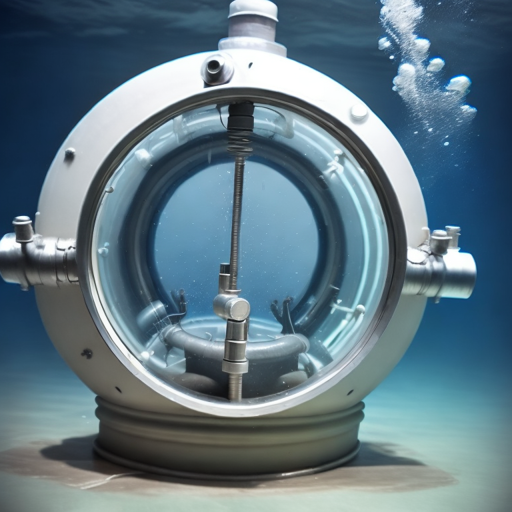Resolution of Helium or Nitrogen in the Body Under Pressure
Helium or nitrogen (inert gases) in a breathing mixture will enter the bloodstream, and dissolve in the blood. This it will do by Henry’s Law, which states:
“At a constant temperature, the amount of gas that will dissolve in a liquid is directly proportional to the partial pressure of the gas and the solubility coefficient of the liquid”
At atmospheric pressure breathing air, about 1.25 grams (1 liter) of nitrogen is present in the body. It is key in the blood and the tissues. Since the amount of gas dissolved in a fluid depends upon the pressure, at 2 bar absolute breathing air, the body will contain about 2.5 grams (2 liters) of nitrogen, and at 3 bar absolute 3.75 grams (3 liters). This is roughly true provided the time of exposure is long enough to allow fullness (saturation).
For a diver saturated in the air:
at 0 m there are approximately 1.25 grams (1 liter) of N2 in the body at 10 m there are approximately 2.5 grams (2 liters) of N2 in the body at 20 m there are approximately 3.75 grams (3 liters) of N2 in the body, etc.
The nitrogen in the body, approximately half (at atmospheric pressure) is confined in the blood and watery tissues, while the remainder is detained in the fatty tissues. However, although there is less fat than water in the body, nitrogen is 5 times more solvable (greater solubility coefficient) in fat than in water, so a fat person will therefore absorb more nitrogen than a slim person.

Saturation (fullness)
When a person is exposed to elevated pressure, increased volumes of inert gas dissolve in the body; at first quickly and then more slowly; until no more gas will dissolve. This situation of steadiness is called ‘saturation’ and the time engaged to reach this state is the ‘Saturation Time’.
The saturation time will depend on the depth, and the gas or gases being breathed, and is of the order of 12 or more hours. Saturation is only comparative to a particular depth however, for example, if a person who has consumed sufficient time at 4 bar absolute (30 m) to become fully saturated goes quickly to 8 bar absolute (70 m), that person will be only half saturated at the new depth.
Blood saturates quickly, but fat takes much longer. Tissues that saturate rapidly also de-saturate; tissues that saturate slowly also de-saturate.
The amount of gas confined in the body thus depends on three factors:
- Pressure to which it has been bare
- Time spent at that pressure,
- The empathy of the tissues in the body for gas. (Solubility Co-efficient).

Physical Effects of Release of Pressure / Decompression (First Stop with Safety)
If the pressure of a liquid, which has been partly or completely saturated with gas, is concentrated, some of the gas comes out of the solution. In the process, bubbles of gas are formed in the liquid. A drawing of this is the removal of the crown cap on a bottle of fizzy lemonade.
Also, any anxiety causes bubbles to come off even faster, and if the liquid is allowed to stand, even for long periods, further trembling brings off more bubbles. This ability of a liquid to hold gas over the normal amount for that pressure is known as super-saturation.

During an underwater dive, nitrogen from the air or mixture (or helium from oxy-helium mixtures) goes into solution in the body at a gradually decreasing rate. On reducing pressure, when ascending fast, bubbles may be formed, producing the symptoms of decompression illness.
Professor Haldane, working in the early 1900s, advanced the hypothesis that bubbles would form in the body if the pressure of gas within the body was more than 2¼ times the pressure outside the body. He postulated that it would be safe to ascend directly from 10 m (2 bar abs) to the surface (1 bar abs) without bubbles forming. This has since been shown to be incorrect. The maximum allowable safe ascent after saturation in the air is 1.7 bar to 1.0 bar.
However, for the practical purposes of non-saturation diving, it may be considered safe to allow a diver to ascend to half their absolute pressure. This is known as their ‘First Stop with Safety’ and may be stated as follows:
Haldane’s First Stop With Safety
In an emergency, a diver can ascend (arise) to half their absolute depth (or pressure) without bubble creation taking place.
i.e. at 50 m (6 bar abs), The diver can ascend to 20 m (3 bar abs), at 10 m (2 bar abs) Diver can ascend to the surface (0 m) (1 bar abs).
This is useful if it is essential to bring up a diver in an emergency since while they are ascending (arising) their correct stops may be strong-minded.
Conclusion:
In underwater diving, gases dissolve in the body under pressure and release upon decompression requiring controlled ascent to avoid bubble formation and decompression illness.
Inert gases saturated tissues necessitating gradual ascent to prevent decompression requiring controlled ascent to avoid bubble formation and decompression illness.

